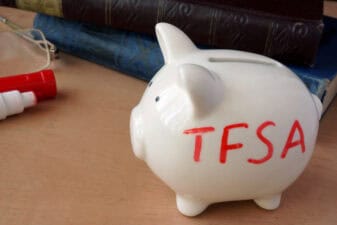If you want to buy stock in a reliable company after the COVID-19 stock market crash, look no further than trusted brands with a history of taking care of their shareholders. There are many of them out there. These dependable stocks issue special cash distributions and always cut investors in on profitable deals.
My top pick is Thomson Reuters (TSX:TRI)(NYSE:TRI), which will sell its analytics platform, Refinitiv, for a profit to the London Stock Exchange later this year. Moreover, Thomson Reuters will boast a 15% ownership share of the London Stock Exchange at the close of the sale.
Thomas Reuters ran into some brief trouble at the onset of the COVID-19 health crisis. The stock plunged in March alongside S&P/TSX Composite Index. Nonetheless, this news and analytics company experienced a stronger upside correction than the index.
How much should you invest in TRI stock?
When it comes to Thomson Reuters, it isn’t a question of whether or not you should buy the stock. The relevant decision is the percentage of your portfolio that you will devote to Thomson Reuters stock. Every Canadian should own this stock!
The amount of money you should devote to one stock in your portfolio depends on your level of risk tolerance. In general, experts recommend devoting no more than 2-3% of your retirement savings to one stock. Investors with a higher risk tolerance, like millenials, can afford more bullish positions, even in volatile market environments like the one caused by the COVID-19 pandemic.
An option strategy for stock market investments
I like buying and holding 100-share positions in stocks. Thus, I would buy and hold a $10,045 position in Thomson Reuters stock at the current share price of $100.45 as of Monday.
As an example, by holding a 100-share position, I would (hypothetically) be able to sell a May 2020 $105 call option on the stock for $1.84. Subsequently, I can also purchase a May 2020 $94 put for $1.82.
Please note that this is only an example and not a recommendation on your ideal COVID-19 options hedge strategy. The options you should buy depend on a number of factors, including volatility and the probability that a stock will rise above or fall below certain prices.
The May call option at $105 would allow me to capture a $450 upside on the stock. Meanwhile, the put option acts as insurance to protect my investment in the event that the stock price falls below $94 per share.
I don’t pay anything for the put option in reality, because I sold the call option for around the same price as I purchased the put option.
How did I choose an options hedge?
This options hedge strategy is derived from the Black-Scholes model. Investors use the Black-Scholes model to price call or put options based on volatility and the underlying stock price, among other factors. The idea is that a shareholder can take advantage of arbitrage opportunities in the difference between the prices of the call and put options (at the same strike price) as well as the company’s stock price and corporate bonds.
In my example, I am bullish on Thomson Reuters stock, so I chose a strike price on my put option well below the current share price of the stock. Similarly, I don’t expect the stock price to go much above $105 by May 15 — the call option’s expiration date. Thus, I chose a call option just barely out of the money or above the current share price.
If the price of the stock does go above $105, I walk away with a $455 gain on my $10,045 investment or a return of 4.5%. If the stock price falls, I’ll hold the stock unless my put option acts as a stop loss on my investment at the strike price of $94 per share. I will only lose $645 on my investment, or 6.4%.









